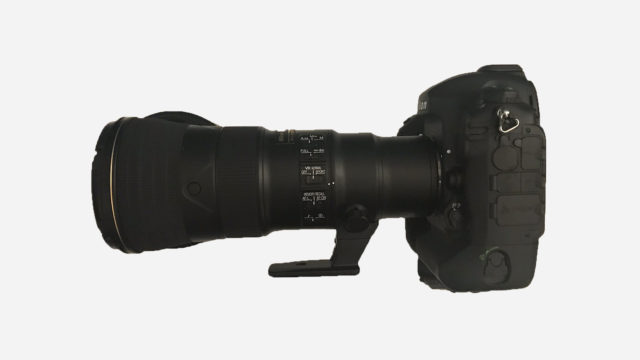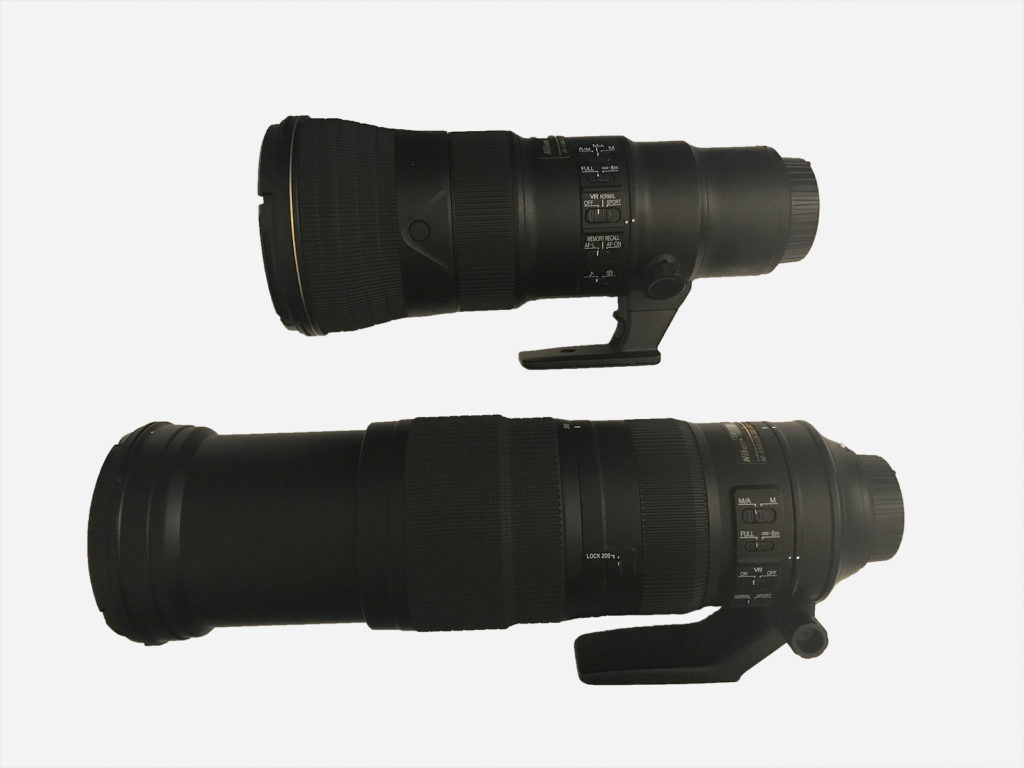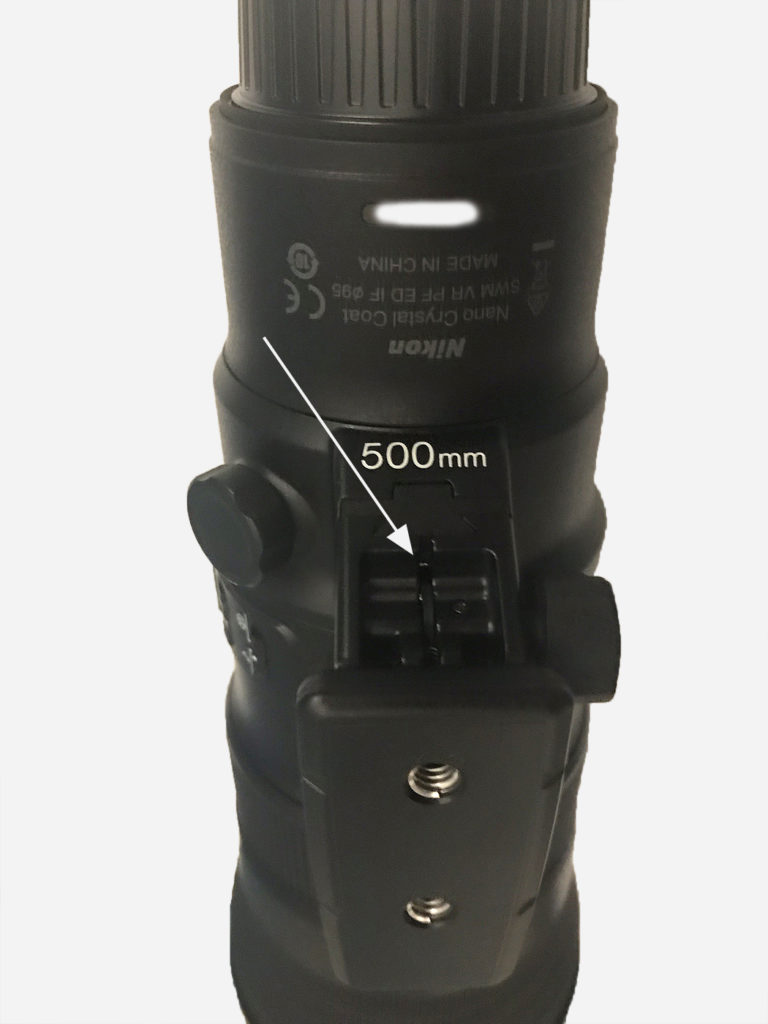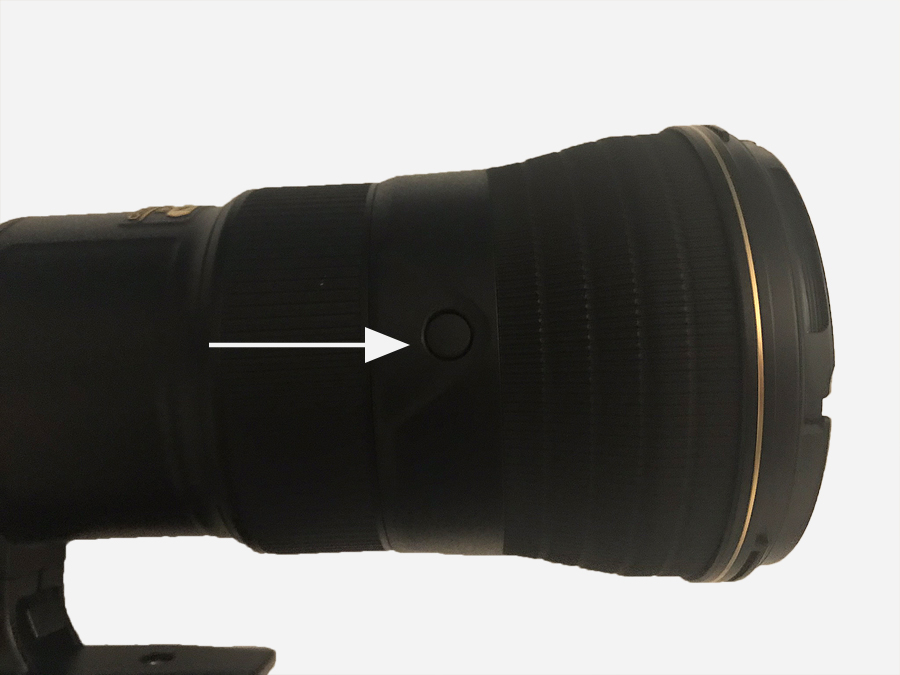
AF-S Nikkor 500mm f/5.6 PF preview
Introduction
A few days ago, I received the new Nikon AF-S 500mm f/5.6 PF. This is the lightest and the smallest Nikon long telephoto lens to date. It uses Phase Fresnel (PF) optics, similar to Canon’s DO (Diffraction Optics) optics. Upon delivery, I first thought I had been sent the wrong lens as the box seemed too small, smaller than the shipping box used for Nikon AF-S 70-200 f/2.8 VR II and much smaller than the box my AF-S 200-500mm f/5.6 VR came in. I could not believe a 500mm lens, soft case and padding material could fit in such small box, but this was indeed the new AF-S 500mm f/5.6 PF! Small and light are both understatements when you compare this lens to any other modern 500mm lens. It even looks compact when you put it next to Nikon’s 16-35mm f/4 VR ultra-wide angle lens.
Below you can see that the new AF-S 500mm f/5.6 PF is shorter and narrower than the AF-S 200-500mm f/5.6 VR zoom at its fully retracted (200mm) position. Click on each image to enlarge.

AF-S Nikkor 500mm f/5.6 PF (top) compared to AF-S 200-500mm f/5.6 VR at 200mm (bottom). The prime is shorter and narrower.
If you extend the zoom to 500mm, there is simply no contest. The prime is a whopping 2 lbs lighter than the zoom. The lens much easier to hand hold. The build quality of the lens is excellent, feels very solid.

AF-S 500mm f/5.6 PF (top) vs. AF-S 200-500mm f/5.6 VR at 500mm (bottom). The zoom looks like a monster compared to the prime.
And here is the 500mm PF compared to AF-S Nikkor 16-35mm f/4 VR, my workaround lens
AF-S 500mm f/5.6 PF mounted on the D5 body. The lens actually weighs slightly less than the D5 body and can be carried easily while attached to the body. Unfortunately it does not have tabs for a shoulder strap but it can be attached to any standard harness.
Another interesting feature of this lens is the slide-in removable foot. To remove the foot press the small lever and just slide it out.
The lens can be tripod mounted even with the foot removed thanks to the tripod mount hole drilled into the base. The foot is shown below.
This lens also features “the ring of fire” buttons around the barrel, these can be programmed to lock AF or switch to a different AF patterns when used with D5/D850 bodies.
The AF-S 500mm f/5.6 PF includes a super-telephoto style control panel. There are three AF modes, A/M , M/A and M. The last one is manual focus, the first two are auto focus. Nikon state M/A is more sensitive to the focus ring rotation, any slight rotation can change the focus whereas is A/M a greater rotation is needed to change the focus, perhaps to prevent focus shift as a result of accidental touching of the focus ring. I never use manual focus so I will leave this on A/M. The focus limiter has two positions, full-range or far (8m-inf) which is an ideal distance for BIF at 500mm. While the far MFD is greater than AF-S 200-500mm f/5.6 VR (6m) it will probably make the AF faster. VR can be set to normal and sport (both can detect panning, but sport gives a more stable finder image while panning). Memory recall controls the functions of the “ring of fire” buttons. AF-L locks the AF, Memory Recall recalls last focus distance set using the button on the other side of the lens and AF-ON will perform the same function as AF-ON on the camera body. The AF-recall confirmation beep can be disabled using the last swtich.
The AF-S 500mm f/5.6 PF is a winner from a size, weight and build quality point of view, my only grips is that the supplied hood is made of plastic instead of carbon fiber which is used in larger super-telephoto lenses. There might be after market magnesium hoods available at some point. The lenses uses a 95mm snap-on cap and takes 95mm screw on filters. The lens ships with a soft case rather than a pouch!
Of course my final judgement and recommendation will be based on the image quality and AF performance in the field, especially with the converter TC14-E III (700mm f/8). To test the VR I snapped a few frames with my D5 at 1/50sec, they were all tack sharp and the AF seemed to lock instantly in my dark living room. Stay tuned for more….
Below is the comparison between AF-S 500mm f/5.6 PF (right) and AF-S 200-500 f/5.6 VR (left) with TC14-E III Nikon D850 ISO 200 f/8 at 1/200 sec on tripod. Click to enlarge. 100% crop from RAW processed with C1P with default settings. Also note that AF-S 200-500mm f/5.6 zoom is not quite 500mm at its longest end due to “focus breathing effect” leading to lower magnification than the prime. Subject distance was approximately 8m. The prime delivers much better micro-contrast and sharpness
100% crop from RAW, feather details, AF-S 500 PF + TC14-E III Nikon D850 ISO 800 1/3200sec hand held. Click to enlarge









Hey Arash, Good job with the review. It leaves me with some questions and one comment.
Since you have done the majority of your flight photography with the 600mm and a 1.4X teleconverter, and since you like to use high shutter speeds, how do you see the 500 PF fitting into your kit? Will you be using it naked all the time or trying flight with the TC-14E (and going to double the ISO)?
With the amazing size and weight gains I would love to see a comparable but of course larger 500 f/4 P.
with love, artie
Hey Artie,
I am hoping to use it with the TC 1.4 X (700mm f/8) the same way I used my 400DOII with the 2X III (800mm f/8) but it depends on how the AF performs. I certainly would like a 600 f/4 PF 🙂
I can’t wait to see your review of this lens when it comes to birds. Was thinking of upgrading my current setup to the 400mm f/4 DO II but now that this beast has come out I’m hoping it performs sufficiently well to get this one instead!
I have the DO II and was told about this lens when I made the purchase but because I had no way of knowing when, and if, the lens would materialize I have no negative feelings about the purchase. In fact, I mentioned, on this site, about what, at the time, was considered no more than a rumor.
I guess the next desirable thing would be a comparison between the Canon and this new Nikon since they are both similar in design although the DO II is heavier and quite a bit more expensive. I’m confident you will do that because that is what you do.
Thanks Arash, I am still not sold 🙂 I was not aware that you used the 400 DO II with the 2X III much for flight. What sort of shutter speeds (and ISOs) were you using in good light? In poor light?
I do agree 100% that the lack of an f/4 telephoto is a big hole in the Nikon line-up.
with love, artie
Hi Artie
Some of my all time favorite images were made with that combination check out these shots https://ari1982.smugmug.com/Portfolio/Avian/Owls/Short-Eared-Owl/ I shot with this lens mainly in winter in Canada when the word “poor” for light is an understatement!
I was using ISO 1600 and higher which the 1DX II could handle easily with Canon DPP4 software. Now with Nikon I can get similar with my D850 and even better results with my D5 when using C1P so I can crank up the ISO without hesitation.
My initial impression of the 500 PF is very positive, AF seems snappy even with the TC and critical sharpness is there too, and with Nikon’s superior Grp AF, I’d pick the 500 PF over 400 DO II. it gives 700mm f/8 as opposed to 800mm f/8 for 400 DO II but it is significantly lighter, smaller and cheaper plus the D850 makes up for the shorter focal length. I think Canon would have a hard time justifying the 7K price tag of the 400DO II compared to 500PF if your main subject is birds
hope this helps
Hi Ari,
First let me state that your work is inspiring!
I am looking to upgrade my gear and was hoping to get your advice as i am having a hard time making a decision and your input would mean a lot.
My photography is mostly wildlife on lengthy trips and can involve substantial hiking so my first priority is weight without sacrificing IQ. I usually try and keep the weight to 5-6 kg for all my gear many times leaving my Gitzo at home.
Anyways if you could expand a little on the choice between the 500 PF vs 400 DO II?
1) When you say the AF on the 500 PF + 1.4X is snappy is that on the D850?
2) How would that combination compare to the 400 DO II and 2X on a 5D IV?
3) is either of these acceptable for action scenarios or would it require a D5 / 1DX-II body?
4) Also i am not sure how i would replace the versatility of the 100-400 ii as a secondary lens on the Nikon side. The 200-500 is both too heavy (~1 kg more) and IQ also does not seem quite as good. maybe the 300 PF + 1.4X?
Thanks
Hi Gal, I answered these questions on BPN
Hi Ari
Any updates on your impression of the 500 PF?
a full review will be out soon
I saw the BPN responses but something which has lingered in the back of my mind cropped up today on the Morris site that deserves consideration. Nikon and big lenses are clearly superior for birds in flight. Keep in mind that the ultimate reason for changing systems is to acquire the extra keepers which Canon cannot. Also, keep in mind that for those wishing to trim down in weight the Nikon 500 F5.6 seems to be the way to go. But also consider that it is not a 600 and to make it so you need teleconverters and Nikon big lenses and multipliers don’t mix well. That said, independent of the F4 advantage, using the Canon F4 DO, it appears, theoretically, to be better able to acquire BIF keepers with the Canon 2x teleconverter than the Nikon 500 F4 with even a 1.4X teleconverter, let alone a 1.7X or 2X. So far I’ve been using the Canon system and simply play with the D500 and 200-500. I am about ready to do the same with the Nikon using the new 500 F5.6 and the D5.
I shoot a lot of warblers and the Canon combo using the 1DX Mark II along with the 5D Mark IV, using the new 100-400, the 500 F4 and the 400 F4 DO, with supplemental fill flash, represent a lot of good cameras and good glass to replace. Considering that the number of shots available, at places such as Magee’s Marsh, is astronomical, and since most are not BIF, I’m not going to be departing from Canon anytime soon. However, I will be advancing forward with Nikon and it will be nice know and understand a workaround for the big glass and teleconverter purchases and usage. Nikon has yet to trim the weight on its 600 F4 the way Canon did. You gain a lot of weight going from F5.6 to F4 even with PF. The Canon 400 F4 DO still has a lot of staying power, by virtue of its speed and predictable functionality, when used with the 2X teleconverter.
Hi Ant,
After using the Nikon 500PF with the Nikon 1.4X I can say for sure that the AF is superior to the combination of the Canon 400DO II + 2X III. The latter was almost useless with my Canon 5D4 for flight images whereas the Nikon combo works well not just with the D5 but also with the D850. Nikon TC-E 1.4X III has nothing short of the Canon TC, in fact I like it better because it is thinner and lighter than Canon’s. Nikon needs more work on their 2X TC but with the D850 there is really no need for it anyway so it’s somewhat a moot point.
Nikon has had a distinct advantage over Canon for quite some time. The company uses sensors which handle resolution and noise considerably better. But on the very high-end cameras, they are about the same. The D5 and the 1DX II come under additional scrutiny when it comes to focus tracking and that is what capturing BIF is all about. Additionally, I’m sure you prefer a D5 image over an 850 image that needed to be cropped. And that is why, when location and weight permit, you will adhere to a fixed 600 f4. Both cameras equipped with high-end telephoto glass will give great results but the D5 will give more keepers. The 850 can’t quite match the D500 when it comes to tracking and frame rate let alone against the D5. The opportunity to photograph birds of prey are a lot less available than the opportunity to photograph waterfowl. Nikon has pretty much caught up to Canon when it comes to good glass but there is one exception. The Nikon 200-500 and the 80-400 do not appear to be quite as sharp as the Canon 100-400 series II. Consequently, when photographing warblers within an environment rich in opportunity (Magee’s Marsh), the Canon 1DX II with the 100-400 will yield somewhat crisper and better-detailed results than the Nikon D5 lens zoom telephoto alternative possible combinations. Plus it is lighter. And you really need a zoom telephoto and a flash unit in that environment. A fixed telephoto is too restrictive. In one day at Magee’s Marsh, thousands of shots will be taken of hundreds of nervous and fidgety birds. Under those circumstances, it is doubtful that a photographer will complain about less keepers. So, yes, you have now convinced me to make my departure from Canon to Nikon but I still need the IDX II and the 100-400 under the narrow set of conditions and circumstances presented under which I sometimes shoot. The day Nikon manages to construct a lens with the same subtle performance characteristics as the Canon 100-400 is the day I sell my I DX II and telephoto combination. So far I have not heard of any rumors regarding this.
Your preliminary review was great. Thanks